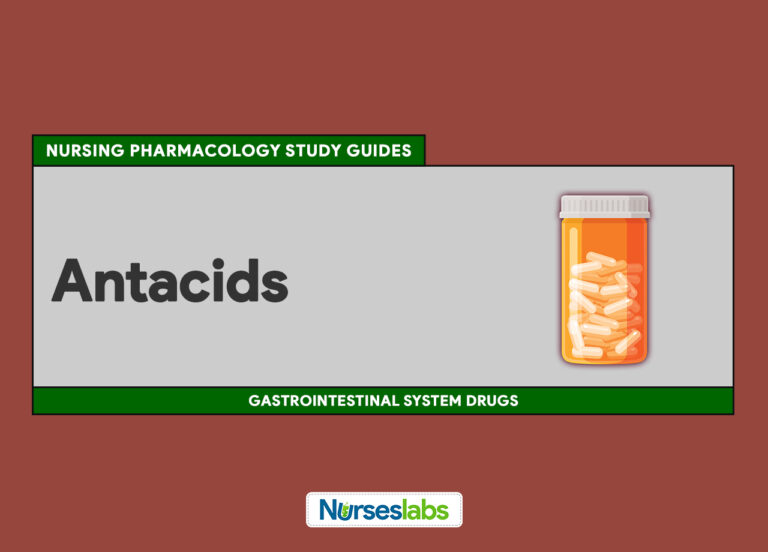Learn about the different antacids in this nursing pharmacology study guide.
Antacids are used to chemically react with and neutralize the acid in the stomach. They can provide rapid relief from increased acid levels. They are known to cause GI alterations such as diarrhea or constipation and can alter the absorption of many drugs.
Table of Contents
- Antacids: Generic and Brand Names
- Disease Spotlight: Ulcer Disease
- What are antacids?
- Therapeutic actions
- Indication
- Pharmacokinetics
- Contraindications and Cautions
- Adverse effects
- Interactions
- Nursing considerations
- Practice Quiz: Antacids
- Recommended Resources
- See Also
- References and Sources
Antacids: Generic and Brand Names
Here is a list of the most commonly encountered antacids and their brand names.
- Antacids
Disease Spotlight: Ulcer Disease
Erosions in the lining of the stomach and adjacent areas of the GI tract are called peptic ulcer.
- Ulcer patients present with a predictable description of gnawing, burning pain often occurring a few hours after meals.
- Many of the drugs that are used to affect GI secretions are designed to prevent, treat, or aid in the healing of these ulcers.
- Further research led many to believe that, because acid production was often normal in ulcer patients, ulcers were caused by a defect in the mucous lining that coats the inner lumen of the stomach to protect it from acid and digestive enzymes.
- Treatment was aimed at improving the balance between the acid produced and the mucous layer that protects the stomach lining.
What are antacids?
Antacids are a group of inorganic chemicals that neutralize stomach acid.
- Antacids are available OTC, and many patients use them to self-treat a variety of GI symptoms.
- The choice of an antacid depends on adverse effects and absorption factors.
Therapeutic actions
The desired actions of antacids include the following:
- Neutralize stomach acid by direct chemical reaction.
- Symptomatic relief of an upset stomach associated with hyperacidity, as well as the hyperacidity associated with peptic ulcer, gastritis, peptic esophagitis, gastric hyperacidity, and hiatal hernia.
Indication
Antacids are indicated for the following:
- Symptomatic relief of GI hyperacidity, treatment of hyperphosphatemia, prevention of formation of phosphate urinary stones.
- Treatment of calcium deficiency, prevention of hypocalcemia.
- Prophylaxis of stress ulcers, relief of constipation.
Pharmacokinetics
Many of these antacids are available in combination forms to take advantage of the acid-neutralizing effect and block adverse effects.
| Route | Onset | Peak | Duration |
| Oral | Rapid | 30 min | 1-3h |
| IV | Immediate | Rapid | Unknown |
| T 1/2: Unknown | |||
| Excretion: Unchanged in urine |
Contraindications and Cautions
The following are contraindications and cautions when using antacids:
- Allergy. The antacids are contraindicated in the presence of any known allergy to antacid products or any component of the drug to prevent hypersensitivity reactions.
- Co-morbidities. Caution should be used in the following instances: any condition that can be exacerbated by electrolyte or acid-based imbalance to prevent exacerbations and serious adverse effects; any electrolyte imbalance , which could be exacerbated by the electrolyte-changing effects of these drugs; GI obstruction which could cause systemic absorption of the drugs and increase adverse effects; renal dysfunction, which could lead to electrolyte disturbance if any absorbed antacid is neutralized properly.
- Pregnancy and lactation. Antacids are contraindicated for pregnant and lactating women because of the potential for adverse effects on the fetus or neonate.
Adverse effects
Adverse effects when using antacids include:
- GI: Gastric rupture.
- Systemic alkalosis: headache, nausea, irritability, weakness, tetany, confusion.
- Misc: Hypokalemia.
Interactions
Antacids can greatly affect the absorption of drugs from the GI tract.
- Alkalinity. Most drugs are prepared for an acidic environment, and an alkaline environment can prevent them from being broken down for absorption or can actually neutralize them so that they cannot be absorbed.
Nursing considerations
Nursing considerations for a patient using antacids include the following:
Nursing Assessment
History taking and physical exam in a patient using antacids include:
- Assess for possible contraindications and cautions: any history of allergy to antacids to prevent hypersensitivity reactions; renal dysfunction, which might interfere with the drug’s excretion; electrolyte disturbances, which could be exacerbated by effects of the drug; and current status of pregnancy or lactation due to possible effects on the fetus or newborn.
- Perform a physical examination to establish baseline data before beginning therapy, determine the effectiveness of the therapy, and evaluate for any potential adverse effects associated with the drug.
- Inspect the abdomen; auscultate bowel sounds to ensure GI motility.
- Assess mucous membrane status to evaluate potential problems with absorption and hydration.
- Monitor laboratory test results, including serum electrolyte levels and renal function tests, to monitor for adverse effects of the drug and potential alterations in excretion that may necessitate dose adjustment.
Nursing Diagnosis and Care Planning
Nursing diagnoses related to drug therapy might include the following:
- Diarrhea related to GI effects.
- Risk for constipation related to GI effects.
- Imbalanced nutrition: less than body requirements related to GI effects.
- Risk for imbalanced fluid volume related to systemic effects.
- Deficient knowledge regarding drug therapy.
Nursing Implementation with Rationale
The nursing interventions for patients using antacids are:
- Adequate drug absorption. Administer the drug apart from any other oral medications approximately 1 hour before or 2 hours after to ensure adequate absorption of the other medications.
- Ensure therapeutic levels. Have the patient chew tablets thoroughly and follow with water to ensure that therapeutic levels reach the stomach to decrease acidity.
- Perform diagnostic testing. Obtain specimens for periodic monitoring of serum electrolytes to evaluate drug effects.
- Prevent imbalances. Assess the patient for any signs of acid-base or electrolyte imbalance to ensure early detection and prompt interventions.
- Institute a bowel program. Monitor the patient for diarrhea or constipation to institute a bowel program before severe effects occur.
- Ensure adequate nutritional status. Monitor the patient’s nutritional status if diarrhea is severe or constipation leads to decreased food intake to ensure adequate fluid and nutritional intake to promote healing and GI stability.
- Provide patient support. Offer support and encouragement to help the patient cope with the disease and the drug regimen.
- Educate the patient. Provide thorough patient teaching, including the drug name and prescribed dose, schedule for administration, signs and symptoms of adverse effects and measures to prevent or minimize them, warning signs that may indicate possible problems and the need to notify the health care provider immediately.
Evaluation
Evaluation of a patient using antacids include:
- Monitor patient response to the drug (relief of GI symptoms caused by hyperacidity).
- Monitor for adverse effects (GI effects, imbalances in serum electrolytes, and acid-base status).
- Evaluate the effectiveness of the teaching plan (patient can name the drug and dosage, as well as describe the adverse effects to watch for, specific measures to avoid them, and measures to take to increase the effectiveness of the drug).
- Monitor the effectiveness of comfort measures and compliance with the regimen.
Practice Quiz: Antacids
Here’s a 5-item quiz from our nursing test bank about antacid study guide. Please visit our nursing test bank page for more NCLEX practice questions.
1. Which of the following statements describes the action of antacids?
A. Antacids block the production of gastric acid
B. Antacids enhance the action of acetylcholine
C. Antacids block dopamine
D. Antacids neutralize gastric acid
1. Answer: D. Antacids neutralize gastric acid
- Option D: Antacids act to bring the pH above 3.
- Options A, B, and C: Other choices are incorrect because they describe actions of antiacid drugs.
2. Patient Gavin is taking antacids, which instruction would be included in the teaching plan?
A. “Avoid taking other medications within 2 hours of this one.”
B. “Continue taking antacids even when pain subsides.”
C. “Weigh yourself daily when taking this medication.”
D. “Take the antacids with 8 oz of water.”
2. Answer: A. “Avoid taking other medications within 2 hours of this one.”
- Option A: The client should be instructed to avoid taking other medications within 2 hours of the antacid.
- Option B: A histamine receptor antagonist should be taken even when the pain subsides.
- Option C: Daily weights are indicated if the client is taking a diuretic, not an antacid.
- Option D: Water, which dilutes the antacid, should not be taken with an antacid.
3. Nurse Victoria is teaching a group of middle-aged men about peptic ulcers. When discussing risk factors for peptic ulcers, the nurse should mention:
A. A history of hemorrhoids and smoking
B. A sedentary lifestyle and smoking
C. Alcohol abuse and smoking
D. Alcohol abuse and a history of acute renal failure
3. Answer: C. Alcohol abuse and smoking
- Option C: Risk factors for peptic (gastric and duodenal) ulcers include alcohol abuse, smoking, and stress.
- Options A & B: A sedentary lifestyle and a history of hemorrhoids aren’t risk factors for peptic ulcers.
- Option D: Chronic renal failure, not acute renal failure, is associated with duodenal ulcers.
4. Which of the following tests can be used to diagnose ulcers?
A. Barium swallow
B. Abdominal x-ray
C. Esophagogastroduodenoscopy (EGD)
D. Computed tomography (CT) scan
4. Answer: C. Esophagogastroduodenoscopy (EGD)
- Option C: The EGD can visualize the entire upper GI tract as well as allow for tissue specimens and electrocautery if needed.
- Option A: The barium swallow could locate a gastric ulcer.
- Options B and D: A CT scan and an abdominal x-ray aren’t useful in the diagnosis of an ulcer.
5. The hospitalized client with GERD is complaining of chest discomfort that feels like heartburn following a meal. After administering an ordered antacid, the nurse encourages the client to lie in which of the following positions?
A. On the stomach with the head flat
B. Supine with the head of the bed flat
C. On the right side with the head of the bed elevated 30 degrees
D. On the left side with the head of the bed elevated 30 degrees
5. Answer: D. On the left side with the head of the bed elevated 30 degrees.
- Option D: The left side-lying position with the head of the bed elevated is most likely to give relief to the client.
- Options A, B, C: These include lying flat on the back or on the stomach after a meal or lying on the right side.
Recommended Resources
Our recommended nursing pharmacology resources and books:
Disclosure: Included below are affiliate links from Amazon at no additional cost from you. We may earn a small commission from your purchase which will help support us. Thank you! For more information, check out our privacy policy.
Pharm Phlash! Pharmacology Flash Cards #1 BEST SELLER!
Test-yourself review cards put critical clinical information for nearly 400 of the top generic medications at your fingertips. And, you can count on them for accuracy, because each card is based on content from Davis’s Drug Guide for Nurses. Increase your test scores in pharmacology class.
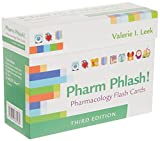
Focus on Pharmacology (8th Edition)
Focus on Nursing Pharmacology makes challenging concepts more approachable. Engaging learning features cultivate your clinical application, critical thinking and patient education capabilities. This updated 8th edition builds on your knowledge of physiology, chemistry and nursing fundamentals to help you conceptualize need-to-know information about each group of drugs.
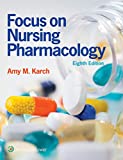
Pharmacology Made Incredibly Easy (Incredibly Easy! Series®)
Nursing pharmacology guide offers step-by-step guidance so you can grasp the fundamentals in enjoyable Incredibly Easy style. This is the perfect supplement to class materials, offering solid preparation for NCLEX® as well as a handy refresher for experienced nurses. Colorfully illustrated chapters offer clear, concise descriptions of crucial nursing pharmacology concepts and procedures.
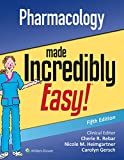
Lehne’s Pharmacology for Nursing Care (11th Edition)
The Eleventh Edition of Lehne’s Pharmacology for Nursing Care provides a thorough understanding of key drugs and their implications for nursing care. This text, written by renowned nursing educators, helps you comprehend and apply pharmacology principles. A clear and engaging writing style simplifies complex concepts, making even the most challenging pharmacology content enjoyable. We recommend this book if you want a comprehensive nursing pharmacology guide.
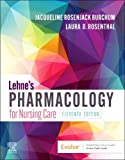
Nursing Drug Handbook
Nursing2023 Drug Handbook delivers evidence-based, nursing-focused drug monographs for nearly 3700 generic, brand-name, and combination drugs. With a tabbed, alphabetical organization and a “New Drugs” section, NDH2023 makes it easy to check drug facts on the spot.
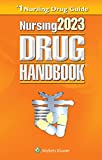
Pharmacology and the Nursing Process
The 10th edition of Pharmacology and the Nursing Process offers practical, user-friendly pharmacology information. The photo atlas contains over 100 unique illustrations and photographs depicting drug administration techniques. Updated drug content reflects the most recent FDA drug approvals, withdrawals, and therapeutic uses.
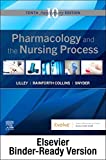
Mosby’s Pharmacology Memory NoteCards: Visual, Mnemonic, and Memory Aids for Nurses
The 6th edition of Mosby’s Pharmacology Memory NoteCards: Visual, Mnemonic, & Memory Aids for Nurses incorporates illustrations and humor to make studying easier and more enjoyable. This unique pharmacology review can be utilized as a spiral-bound notebook or as individual flashcards, making it ideal for mobile study.
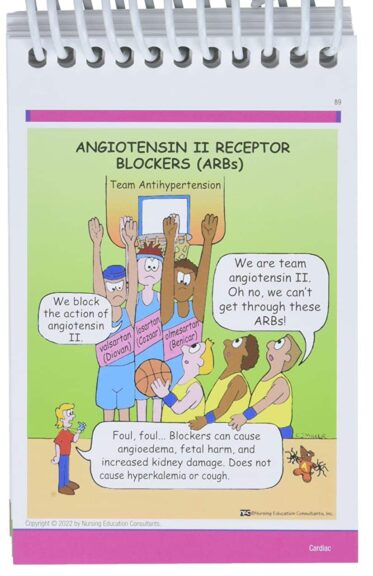
See Also
Here are other nursing pharmacology study guides:
- Nursing Pharmacology – Study Guide for Nurses
Our collection of topics related to nursing pharmacology - Pharmacology Nursing Mnemonics & Tips
These nursing mnemonics aim to simplify the concepts of pharmacology through the use of a simple, concise guide. - Generic Drug Name Stems Cheat Sheet
Learn about these generic drug name stems to help you make sense of drugs easier! - Common Drugs and Their Antidotes
A guide to drug antidotes that nurses should be familiar about. - IV Fluids and Solutions Guide & Cheat Sheet
Get to know the different types of intravenous solutions or IV fluids in this guide and cheat sheet. - Drug Dosage Calculations NCLEX Practice Questions (100+ Items)
Care to take the challenge? This quiz aims to help students and registered nurses alike grasp and master the concepts of medication calculation.
Drug Guides NEW!
Individual drug guides and nursing considerations for the most common medications used in nursing pharmacology:
- Acetaminophen (Tylenol)
- Aspirin
- Atorvastatin (Lipitor)
- Enoxaparin (Lovenox)
- Furosemide (Lasix)
- Gabapentin
- Hydromorphone (Dilaudid)
- Lisinopril
- Metoprolol
- Morphine
Gastrointestinal System Drugs
Respiratory System Drugs
- Antihistamines
- Bronchodilators and Antiasthmatics
- Decongestants
- Expectorants and Mucolytics
- Inhaled Steroids
- Lung Surfactants
Endocrine System Drugs
- Adrenocortical Agents
- Antidiabetic Agents
- Glucose-Elevating Agents
- Hypothalamic Agents
- Insulin
- Parathyroid Agents: Bisphosphonates, Calcitonins
- Pituitary Drugs
- Sulfonylureas
- Thyroid Agents
Autonomic Nervous System Drugs
- Adrenergic Agonists (Sympathomimetics)
- Adrenergic Antagonists (Sympatholytics)
- Anticholinergics (Parasympatholytics)
- Cholinergic Agonists (Parasympathomimetics)
Immune System Drugs
Chemotherapeutic Agents
- Anthelmintics
- Anti-Infective Drugs
- Antibiotics
- Antifungals
- Antineoplastic Agents
- Antiprotozoal Drugs
- Antiviral Drugs
Reproductive System Drugs
Nervous System Drugs
- Antidepressants
- Antiparkinsonism Drugs
- Antiseizure Drugs
- Anxiolytics and Hypnotic Drugs
- General and Local Anesthetics
- Muscle Relaxants
- Narcotics, Narcotic Agonists, and Antimigraine Agents
- Neuromuscular Junction Blocking Agents
- Psychotherapeutic Drugs
Cardiovascular System Drugs
References and Sources
References and sources for this Antacid Nursing Pharmacology Guide:
